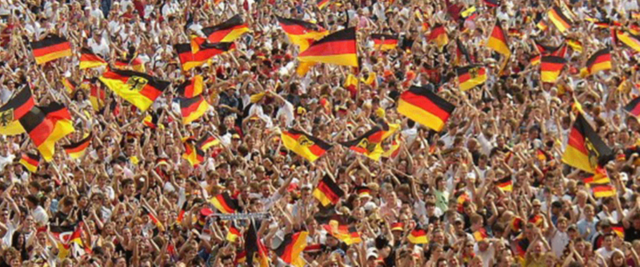Germany didn't become an elite powerhouse in men’s and women’s soccer overnight. In fact, given those teams’ success in recent World Cups and other international competition, it’s easy to forget that the men suffered a devastating 3-0 loss to Croatia in the quarterfinals of the 1998 World Cup.
Not even two decades later, Germany is the reigning 2014 World Cup champion. The men’s team also reached the finals of the 2002 World Cup and finished third in the 2006 and 2010 World Cups. Meanwhile, Germany won the Women’s World Cup in 2003 and 2007, and was the No. 1 seed coming into the 2015 Women’s World Cup.
That pivotal 1998 World Cup loss to Croatia marked a turning point in Germany’s soccer history, and artificial turf plays a major role in the country’s recent success.
Beginning in 2001, according to a report released by the European Synthetic Turf Organisation, the German Football Association (also known as DFB) required all soccer clubs in the country’s top two divisions to develop youth academies operated by specially licensed and high-ranking coaches.
A few years later, in an effort to bring soccer to the masses, the DFB installed more than 1,000 synthetic turf mini-pitches throughout Germany, paid for by income from the 2006 World Cup and the Union of European Football Associations’ HatTrick assistance program, which provides financial support to UEFA member associations in order to develop and foster the sport at all levels. The DFB alone invested 25 million euros in the project, and more than 4,000 schools and clubs applied for grants. The mini-pitches are distributed equally among Germany’s 21 regional soccer associations. According to ESTO, “virtually every child in the land will find a football pitch close by.”
Since 2000, FieldTurf has installed more 800 synthetic turf fields in Germany, many of them as a result of the DFB initiative.
Artificial turf ensures consistent ball roll and makes for ideal year-round playing conditions. FieldTurf drains consistently, is built for repeat play and can be used for more hours per day than grass — in almost any type of weather — with no field-recovery time needed. What’s more, not only does artificial turf reduce maintenance costs such as re-sodding, watering and mowing, but there also is no need to purchase and apply harmful pesticides and herbicides. And when it comes to safety, a peer-reviewed, five-year study published in the American Journal of Sports Medicine concluded that women’s college games played on FieldTurf resulted in statistically fewer injuries and fewer severe injuries than those played on natural grass.
According to the ESTO report:
Previous research clearly shows that infrastructures are key to the development of the game. In order to improve the quality and quantity of football within a country, the number of playing surfaces must increase. Smaller-dimensioned pitches are cheaper to install and operate than full-sized surfaces, making them a cost-effective solution to the demand for football facilities. Several mini pitches can often be installed for the same cost as a single full-sized pitch. More importantly these mini pitches offer accessibility, as they can be installed in various … settings: i.e. school playground[s], national and regional technical centres, built-up urban areas (e.g. rooftops), club training grounds, company recreational grounds, parks and municipality facilities.
The report also contends that the removal of barriers to participation has made the sport more accessible to younger age groups, including females, and therefore increased the odds of producing elite world-class players.
As the ESTO report concludes:
“It is evident that a robust facilities strategy focusing on synthetic turf is a contributor to performance at the highest level. This strategic approach must be applauded by the German Football Association and hopefully a blueprint for other football associations to follow.”


